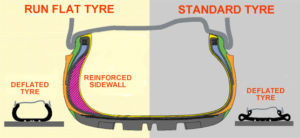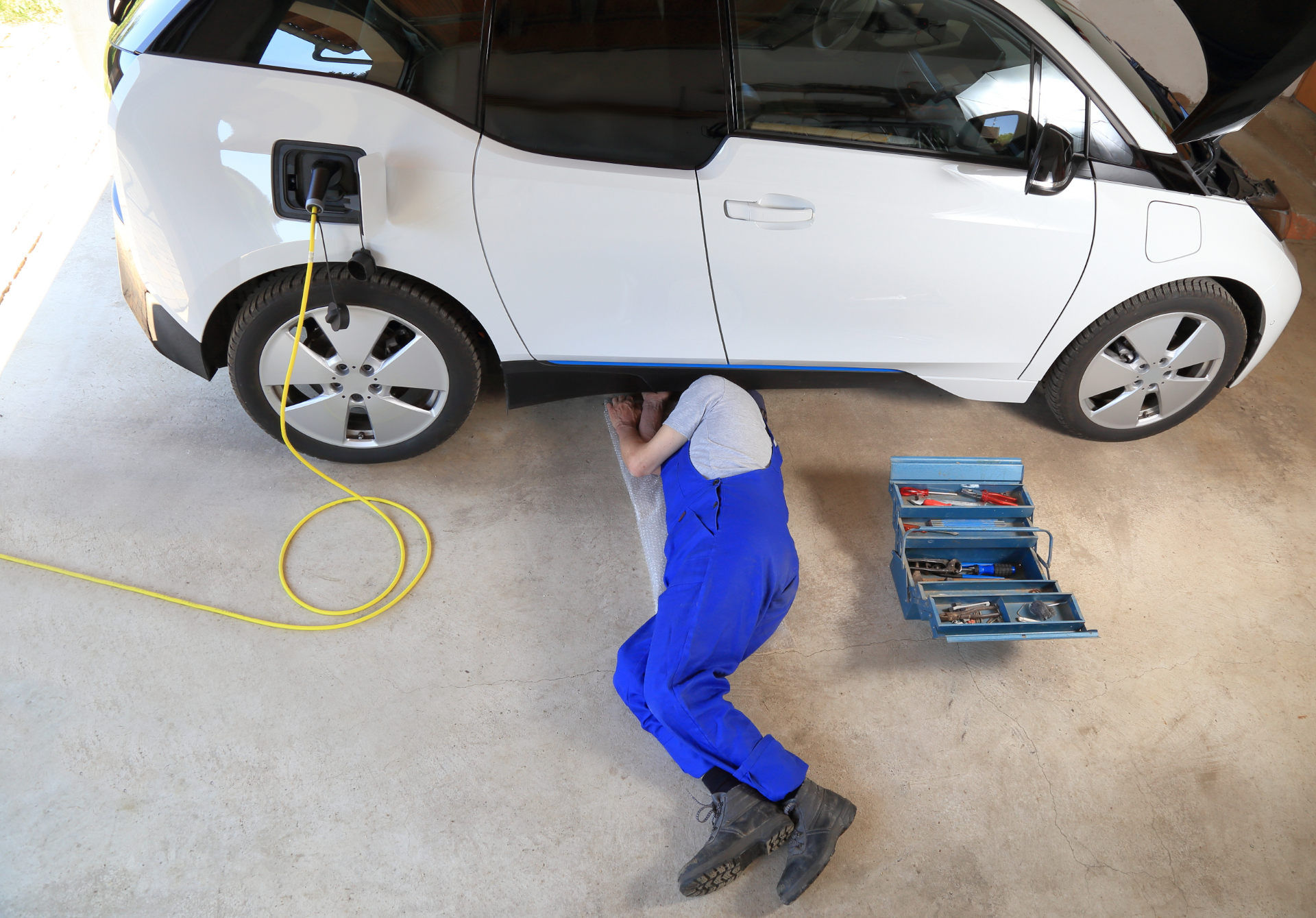With run flat tyres being increasingly used by vehicle manufacturers, this week’s “Getting to Know” series takes a look at what they are and how they work.
What are run flat tyres?

Run flats tyres have reinforced sidewalls which allow you to continue driving at a limited speed (50mph) and for a limited period (50 miles) in the event of a puncture. Their purpose is to keep the vehicle under control following a loss of air pressure, and they also remove the need for a spare wheel.
How do they work?
Run flat tyres have a reinforced sidewall that keeps the tyre beads firmly attached to the wheel rim, thereby making them capable of supporting the weight of the car without any air pressure in the tyre.
What are the different types of run flat tyre?
There are two main types:
The first uses Self-Supporting Run flat (SSR) technology (as pictured in this article), which is based on a self-supporting reinforced sidewall. When there is a puncture, the sidewalls’ stiff construction avoids them from being crushed between the rim and the ground, and also prevents the tyre from slipping off the rim.
The second type of run flat uses an internal support ring. The way that it works is when the tyre becomes deflated, it rests upon a lightweight metal ring, which supports the vehicle and maintains both the shape of the tyre and contact with the road.
Do run flats need to be used with a Tyre Pressure Monitoring System (TPMS)?
Run flats must be used in conjunction with an on-board Tyre Pressure Monitoring System (TPMS), because without it, you might not know you were driving on an under-inflated tyre. Without this alert, it could lead to a complete failure of the tyre and cause even more damage to the wheel.
Can I change to regular tyres if run flats are the standard “fit” for the car?
Changing from run flats (the ‘Original Equipment’ when the car leaves the factory), to standard tyres, is not recommended for two reasons. This is because:
- Run flat tyres are very hard due to their construction, and the suspension is therefore set for a softer ride to compensate. Therefore, if a standard tyre is fitted instead of a run flat, the ride will feel very soft and the handling will be affected, thereby compromising safety, and possibly the insurance policy.
- There will be no spare tyre available in the boot, which could leave you stranded at the roadside in the event of a puncture.
Is it possible to repair run flat tyres?
Most garages will not attempt to repair a run flat tyre because it is often difficult to assess if the sidewall has been damaged. It’s therefore recommended that a new run flat tyre is fitted in these circumstances.
How can I tell from looking at the sidewall that it’s a run flat tyre?
A run flat tyre often is often marked with the letters “RSC”, meaning R-un flat S-ystem C-omponent. However, tyres manufacturers also use the following abbreviations:
Bridgestone: RTF (Run Flat Tyre)
Dunlop: DSST (Dunlop Self-Supporting Technology)
Firestone: RTF (Run Flat Tyre)
Goodyear: EMT (Extended Mobility Technology)
Kumho: XRP
Michelin: ZP (Zero Pressure)
Pirelli: (Run Flat Technology)
Yokohama: Run Flat
Where can I find a garage to get run flat tyres fitted?
To find your local Motor Ombudsman-accredited franchised car dealership or independent garage to get run flat tyres fitted to your car, visit The Motor Ombudsman’s online Garage Finder.
Image courtesy of askthemechanic.co.uk



